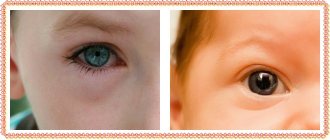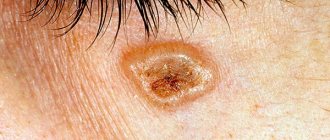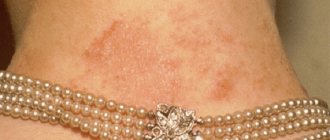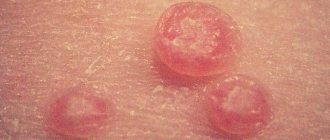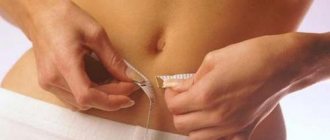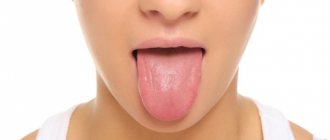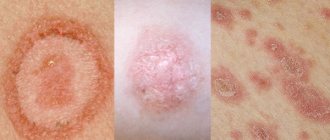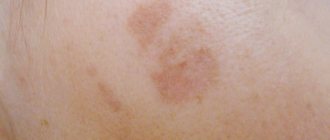Chloasma is a primary focal hyperpigmentation of the skin. Age spots are most often located on the face and can have different shapes and sizes. At its core, chloasma refers to limited melasma (a disease characterized by excessive deposition of melanin in the skin). With this pathology, pigment can accumulate in excess in the epidermis and dermis.
Most often, chloasma occurs in pregnant women, as well as in women who suffer from inflammatory processes of the genitourinary system. In terms of frequency of development, chloasma is ahead of other types of pigmentation that occur on the skin (freckles, age spots, pigmentation as a result of systemic and skin diseases).
Chloasma - what is it?
The appearance of age spots on the face does not cause concern, itching or pain. Dark spots with clear boundaries behave like ordinary freckles - they fade in winter, become saturated with color by summer, require a thick foundation and do not create any problems other than aesthetic ones.
Having discovered chloasma on the face, a person strives to get rid of it; the appearance of unkempt aging skin does not decorate anyone. Expensive creams and whitening serums are used, but getting rid of chloasma is more difficult than whitening freckles.
Therapy methods
The appearance of dark spots on the skin causes a lot of inconvenience to their owners, especially from an aesthetic point of view. Therefore, people try to get rid of them by any possible means. Sometimes hyperpigmentation goes away on its own, for example, in pregnant women some time after childbirth. This is explained by the fact that melasma in this case was caused by hormonal changes; accordingly, the spots disappear when the woman’s body returns to normal.
However, in most cases, eliminating this defect requires effort. Treatment of melasma and chloasma is currently carried out in various ways, for which they use:
- facial mesotherapy;
- microdermabrasion;
- laser resurfacing;
- chemical peels;
- laser peeling;
- photorejuvenation;
- creams (for epidermal hyperpigmentation);
- cosmetic preparations.
The latter include various means with:
- arbutin (Green tea);
- azelaic acid (Aziks-Derm), etc.
Of course, the main condition for successful treatment of melasma is the elimination of the causes that provoked its appearance. Mandatory rules of conduct include the following requirements:
- refusal of hormonal drugs, including contraceptives;
- regular use of sunscreen;
- refusal of drugs and products with a photosensitizing effect;
- use of cosmetics under the supervision of a doctor, etc.
However, if the cause of hyperpigmentation is hormonal imbalance, treatment can be difficult, since normalizing these processes is not an easy task.
Currently, Russian scientists have developed the drug Pineamin, which has proven itself as a means of stabilizing hormonal processes in the body. Pineamin is used, in particular, to normalize the condition of women during menopause. Hormonal imbalances lead to various negative consequences, including the appearance of melasma.
In this case, Pineamin may be a drug that forms the basis for the treatment of hyperpigmentation.
Pinelamine is available as a liquid in 10 mg bottles and is administered by injection. Typically, the course of the drug is 10 days, and its effect lasts for six months. Pinelamine has undergone all the necessary studies, during which it has confirmed its effectiveness and safety. It has virtually no side effects. However, any prescription, especially drugs that regulate hormonal balance, must be made by the attending physician.
It must be remembered that the appearance of melasma/chloasma on the surface of the skin is a reason to undergo an examination. First of all, you should make sure that this phenomenon is not malignant; secondly, you should make sure that the liver is functioning normally, and then pass the necessary tests that reflect the state of the body in other parameters.
https://youtube.com/watch?v=TNQHYps8Rl4
Causes
The reasons for its appearance do not lie on the surface of the skin; it is caused by malfunctions in the body. Indicating serious internal problems, chloasma cannot be treated until the underlying fault in the system is corrected.
Excessive and uneven concentration of melanin can be caused by hormonal disorders, metabolic problems, and excessive exposure to the scorching sun or in a solarium. The appearance of chloasma is a signal of a disruption in the functioning of some organ or system associated with metabolism or the production of hormones.
This fact is confirmed by the fact that chloasma often “decorates” pregnant women, patients with a diseased liver, taking hormonal medications, and patients with inflammation in the reproductive system.
Another common cause of age spots is parasites in the body. If the spots are localized on the lips and near the mouth, an urgent visit to the doctor is necessary.
Why does this pathology occur?
Chloasma - what is it? This is a disease that results in a pigmented spot. Its formation is associated with increased deposition of melanin pigment in the cells of the epidermis and dermis. The nature of the formation of the disease is similar to freckles and age-related skin pigmentation. This is a common pathology that is more common in women. Dermatologists diagnose chloasma in more than 15% of patients who seek help. The average age of patients is from 20 to 50 years. This disease is more common in people with dark skin who are prone to tan quickly.
Despite numerous studies, scientists do not have a clear opinion about the processes that stimulate excess melanin deposition in facial skin cells. Observations have shown that the disease in some cases is a manifestation of deep disturbances in metabolic processes and the functioning of the endocrine glands. Pigmentation on the face accompanies severe chronic liver damage: cirrhosis, hepatitis, liver failure. It often occurs in pregnant women and patients with diseases of the reproductive system: endometritis, salpingitis, adnexitis and others. The disease can occur during long-term use of oral contraceptives. Another possible cause of excessive pigmentation is prolonged exposure of the skin to ultraviolet rays. Therefore, you should not abuse the solarium and sunbathing in the active sun. According to dermatologists, provoking factors for the development of the disease can be:
- use of low-quality cosmetics;
- lack of B vitamins and ascorbic acid;
- chronic stress and diseases of the nervous system;
- skin injury;
- genetic predisposition.
In recent years, the attention of dermatologists to chloasma has increased significantly. This is due to the fact that excess melanin production often accompanies such a serious disease as skin cancer. In addition, chloasma is a cosmetic defect that causes many problems for women. Since it is difficult to correct, patients are constantly in a depressed and nervous state. This affects their health.
How it manifests itself
The medical description of this phenomenon is an area of skin with clear contours, on which there is increased pigmentation. The pigment melanin, which is responsible for skin color and tanning, begins to be produced in increased quantities, and a dark-colored spot of round or irregular shape appears on a specific area of the skin.
It does not protrude above the surface, does not sink, and does not remind of itself in anything other than color. The color of the spots resembles a dark tan, numerous spots are often connected by edges, the face looks uneven and unkempt.
Places where chloasma may appear:
- forehead;
- skin above the upper lip;
- cheeks;
- bridge of the nose;
- facial contour.
Another area stands out, typical only for girls: spots appear symmetrically around the mouth, including the nasolabial folds.
This also includes the pigment line, which runs through the forehead, cheek and goes to the side of the neck. This type of chloasma is an important early symptom of serious brain damage, in particular it is used to recognize Parkinson's disease.
Diagnostics
Dermatologists quickly diagnose chloasma. Inspecting the stain is enough. Having clarified the situation and time of appearance, the doctor rules out moles and darkening of the skin after injuries, abrasions, and burns.
Chloasma must be differentiated from other types of pigmentation:
- Mongolian spot;
- secondary hyperpigmentation;
- occupational melasma;
- borderline and giant pigmented nevi.
When identifying chloasma, examinations are divided into two directions:
- Siascopy (examination of spots with a scanner in detail, allows you to notice malignant changes at the earliest stages) and dermatoscopy (examination using high magnification). These studies allow us to understand the degree of pigmentation, depth and prescribe appropriate treatment for this cosmetic defect.
- Chloasma is a symptom of hidden diseases, so patients are given a referral for examination of internal organs. Without their recovery, chloasma will return.
Chloasma symptoms and course
Chloasma is manifested by rashes of age spots, usually on the skin of the face. Pigment spots can have different shades and different sizes. Irregular outlines of spots are characterized by clear boundaries.
Chloasma spots may coalesce to form large areas of pigmented skin. For reasons that provoke the development of chloasma, the disease can be observed:
- during pregnancy;
- for various gynecological diseases;
- for liver diseases and all kinds of injuries.
Increased pigmentation in the mouth area may indicate the early stages of polyp formation in the gastrointestinal tract.
Chloasma therapy
Treatment of the disease is determined by the extent of hyperpigmented skin and the causes of the disease. Treatment, as a rule, is complex, that is, it involves not only dermatologists, but also other specialists, depending again on the causes of chloasma. If the causes of the disease are eliminated, age spots gradually begin to fade until they disappear altogether. With a secondary disease or another pregnancy, they may occur again.
To normalize the process of melanin production in the skin, it is necessary to support the body with vitamin complexes, the most important of which is vitamin C. For chloasma, vitamin C is prescribed in the form of injections. In addition, it is recommended to consume folic acid and riboflavin. Vitamins B1 and B6 help effectively.
Local therapy is determined by the specifics of the process and its duration, the condition of the skin and the body’s reactions to the drugs used. To enhance the effect, you can use skin whitening products.
In cosmetology, creams with sea sponge bodyaga, lactic and salicylic acids, mercury salts and special whitening soap are often used to lighten age spots. The cryotherapy procedure, carbonic acid and dermabrasion with chemical acids have a very pronounced positive effect.
Features of chlaosma treatment
In cases where chloasma occurs due to constant exposure to sunlight, anti-malaria drugs are prescribed for oral use, which negate the destructive effects of ultraviolet radiation. For chloasma caused by sun rays, it is prohibited to use any cosmetic essential oils, as they increase skin sensitization to radiation coming from the sun. Only sunscreen lotions are suitable for use with this type of chloasma.
Recommendations from experts
It must be said that in each specific case, any remedy against excessive pigmentation will work differently. Some recommendations for lightening age spots and preventing their further development:
- Before going outside on a sunny day, you must apply sunscreen to exposed areas of the body, trying to cover as much skin as possible with clothing;
- Before using any bleaching agent, you must obtain the advice of a specialist;
- To even out your skin tone, you can use foundation, powder and camouflage pencils.
Since most processes in the human body are controlled by hormones, diseases are also determined by the level of a particular hormone in a person’s blood at the current time. Chloasma is no exception. The disease that occurs during pregnancy will go away after childbirth. In addition, stopping the use of oral contraceptives also helps stop the development of the disease.
How to remove chloasma on the face
Successful treatment of chloasma is possible after an accurate diagnosis of the diseases that caused it. Once metabolism and hormonal balance are restored, pigmentation of areas of the skin becomes a cosmetic problem that can be easily corrected. For successful recovery you need to follow several rules:
- avoid being in bright sun;
- use sunscreen;
- take vitamins prescribed by the doctor: aevit, folic acid, methionine, riboflavin, injections of B vitamins.
- stop visiting the solarium;
- Avoid using essential oils in cosmetics; they increase sensitivity to the sun and cause pigmentation.
Methods of cosmetic facial correction
A visit to a cosmetologist gives lasting results in the treatment of hyperpigmentation on the face. The work of a cosmetologist on chloasma comes down to the following actions:
- Protection from direct sun exposure. For this purpose, suitable protective equipment is selected for the patient.
- Removing the layer of dead cells. Thus, some of the dark cells are mechanically removed and the spots become lighter. The skin begins to renew itself more actively, and the stain gradually disappears.
- Suppression of melanin production in certain areas. For this, whitening cosmetics with traditional and modern components are used: acids, plant extracts, omega-3 and others.
In addition to cosmetics, hardware procedures are used for correction: dermabrasion, laser corrections, massages, injections.
Medicines
Drugs prescribed for the treatment of chloasma require careful adherence to instructions, dosages and specialist supervision. Overdosing or increasing the time of procedures can lead to the opposite effect: the skin in the affected area will be excessively whitened, and this area will also stand out on the face. In addition, in some cases, actively targeting melasma can cause increased melanin production, causing the spot to darken even more.
To control the production of melanin, doctors prescribe vitamins that affect its production and excretion:
- The essential amino acid methionine effectively lightens chloasma. It is prescribed three times a day, 0.5 g.
- Ascorbic acid, when applied to the skin, easily penetrates the external barrier, stops the formation of melanin, promotes active collagen production and whitens the skin. To enhance the effect, ascorbic acid is prescribed for oral administration.
- Folic acid (vitamin B9) has a beneficial effect on the skin. Among its many beneficial properties is the ability to create invisible protection against UV radiation. Take 0.1 g per day.
- Skinoren cream not only solves the problem of excess pigmentation, it cleanses the skin of inflammation and helps remove traces of acne. The active ingredient of the cream is azelaic acid. It suppresses the development of excess melanocytes, making them non-viable. To get rid of pigmentation, a course of about three months is required. A 2.5 cm strip of cream is enough to apply to the entire face.
Which doctors should I contact for this problem?
Skin problems are dealt with by specialists - dermatologists. You can also start treatment by making an appointment with a therapist, who will write a referral to a dermatologist and specialists in major chronic diseases. Based on the test results and taking into account your medical history, you can receive a referral to a gastroenterologist, gynecologist, oncologist, neurologist and other specialized specialists.
Difference between melasma and chloasma
Scientists from all countries cannot decide whether these two defects are synonyms of the same pathological process. Their opinions are divided and are based on the causes of each of these types of skin hyperpigmentation. It is on this basis that they are divided into 2 groups:
- chloasma is considered to be a disruption of the process of melanin formation in the body due to changes in hormonal balance, diseases of the liver, gastrointestinal tract, and genital organs;
- melasma is a general name for pigmented formations that most often appear on the face during age-related changes, as well as during pregnancy.
Considering the similarity of symptoms of these skin pathologies, as well as the same methods of treating them, doctors equate these diseases of the epidermis and are increasingly calling this condition one term - melasma.
Treatment at home
Considerable experience in the treatment of chloasma has been accumulated in folk medicine. Various methods of topical whitening are often quite effective in combating blemishes on the face. Lotions and poultices, that is, masks and compresses, are made in courses for several days in a row, observing the changes.
Face masks
- Hydrogen peroxide is mixed with brewer's yeast and ammonia in a ratio of 2:1:1, applied pointwise to the stains, and left for no more than a quarter of an hour.
- Add half a teaspoon of honey and lemon juice to a tablespoon of mashed parsley. Apply to the entire face for 20 minutes. This mixture whitens, nourishes and tones the skin, and has a pronounced effect on aged and tired skin.
- Kefir, yogurt, sour cream, and acidophilus have excellent skin whitening properties. For ease of application and protection from rapid drying, the fermented milk product can be mixed with oatmeal, which will gently exfoliate the top layer.
Lotions, Compresses
If the mask is prepared for one time, the whitening lotion can be prepared for several days in a row. Wipe the skin with a cotton pad with lotion twice a day.
For intensive use, take a cotton pad or gauze, fold it several times, soak it with a useful composition and apply it to problem areas. Cover the top with a film and a dry cloth to retain heat and have an effective effect.
- a mixture of apple cider vinegar and water 1:1;
- cucumber lotion: the juice of one cucumber is mixed with the juice of half a lemon.
Treatment of pathology
After the doctors have examined the patient’s condition and ruled out oncopathology of the skin and endocrine glands, treatment is prescribed. As a rule, it includes a complex of medications and cosmetic procedures. Treatment tactics are aimed at correcting the functioning of organs and glands that stimulate pathological hyperpigmentation and discolor pigment spots as much as possible.
The basis of external treatment is procedures that suppress the production of melanin in skin cells and its transport to deeper layers. The epidermal type of the disease is most treatable, but the pigmentation of the dermal type can only be lightened a little; such spots do not go away completely. Most often, patients are prescribed:
- Mesotherapy procedures. This is the name for therapeutic injections into the subcutaneous layer of a pigmentation spot. For the patient, the cosmetologist selects individual mixes based on the color, distribution and localization of spots. The composition of injectable preparations includes glycolic, ascorbic, azelaic, kojic and other acids with a whitening effect. Another component can be extracts of medicinal herbs: licorice root, mulberry root, olive root, white lily flowers, caraway seeds, strawberry leaves. All of them are sources of sulfides, phenols, phenolcarboxylic acids and unsaturated fatty acids, which enhance the whitening effect. When treating the disease, preference is given to complex mixtures containing vitamin supplements that maintain the condition of the facial skin.
- Laser radiation. The use of laser in cosmetology has made it possible to solve treatment problems at a new level. In a short time, amazing results can be achieved, and the patient can lead a normal lifestyle and go to work. The essence of the procedure is that the cosmetologist directs a beam of rays of a certain length (most often 694 nm) to the pigment spot. The light wave is absorbed by melanin, as a result, under the influence of thermal energy, cells that accumulate pigment are destroyed, and the spot is lightened. Laser radiation is prescribed individually according to such characteristics as time, accuracy and depth of exposure, area and configuration of the pigment spot, and limited effect on neighboring areas of the skin. The phototype of the skin and the degree of its moisture must be taken into account. All microbes die in the area of laser exposure, so acne and pustular skin lesions can be cured at the same time.
- Selective photothermolysis. A laser beam is directed to the area affected by chloasma, which is divided into many microbeams and forms a lattice. As a result, skin cells are renewed both in the outer and deep layers, and pigmentation disappears.
- Laser peeling. The procedure is performed in 2 varieties: carbon dioxide and erbium peeling. The carbon dioxide version allows you to treat the deeper layers of the skin, while the erbium version only affects the epidermis. Under the influence of the beam and chemical components, skin cells evaporate, and in their place young, healthy ones, without excess melanin, are formed.
- Chemical peeling. The method allows you to influence all layers of the skin: superficial, middle and deep. With the help of substances such as hydroquinone, tretionone, retinoids, glycolic and azelaic acids, skin cells with deposited melanin are burned. After desquamation, new healthy cells form in their place. The procedure helps to completely get rid of this disease or lighten pigmentation as much as possible.
- Cryotherapy. In case of illness, cold treatment is prescribed. It is carried out using liquid nitrogen. ice or cool dry air. The goal of cryotherapy is to apply cold to the skin in areas of pigmentation, activate blood flow and mobilize the immune and neurohumoral systems. Controlled exposure to cold causes the destruction of pathological cells. A type of cryotherapy is cryopilling, in which skin cells in damaged areas are burned out, and young ones grow in their place, without melanin deposits.
- Biorevitalization. Injections with hyaluronic acid normalize metabolic processes in skin cells, including those associated with melanin deposition. As a result of the procedure, the upper layer of the epidermis in the pigmentation zone peels off, and the spots become discolored.
- Photorejuvenation. A cosmetic procedure in which an area of skin is exposed to light and heat. Melanin perceives these waves, the damaged cell overheats and is destroyed. Photorejuvenation also activates the barrier function of the epidermis and dermis.
- External preparations based on substances that reduce melatonin formation. These include creams and ointments such as Mezan, Akhremin, Celandine, Metamorphosis, Hydroquinone ointment. To whiten age spots, the following are used: white sedimentary mercury, sulfur ointment, ointment with perhydrol, sublimate alcohol.
Drug treatment for chloasma is also aimed at combating excess melanin production. As a rule, these are hormonal drugs and drugs that normalize metabolism. To regulate the production of melanin, vitamin complexes with riboflavin, folic and ascorbic acids, and B vitamins are prescribed.
Chloasma during pregnancy
Pigmentation increases during pregnancy; this is a normal phenomenon that should not be dealt with. The areolas and the line at the bottom of the abdomen darken, and freckles become more noticeable. Hormonal changes in the body working with double load provoke the appearance of melasma.
It is advisable for pregnant women to protect themselves from the sun, take vitamins on time, and consider a diet rich in sea fish, herbs, vegetables and fruits.
If spots do appear, they will disappear on their own 3-5 months after birth. If they do not go away, you should consult a doctor. Pigmentation can signal internal problems in the body; after pregnancy, it is especially important to check the proper functioning of the ovaries and thyroid gland; the functioning of these organs may change during pregnancy.
Features of therapeutic treatment of chloasma/melasma
Therapeutic treatment of pathology should be carried out by a dermatologist. Initially, it is necessary to conduct an ultrasound diagnosis of the genital organs, take hormonal tests, and obtain a gynecologist's opinion.
After this, the dermatologist must conduct tests for tumor markers to exclude the malignant nature of the pathology.
Therapeutic treatment is aimed at eliminating the root cause - the individual factor that became the impetus for the appearance of pigmentation.
The standard correction scheme provides:
- complete abolition of hormonal contraceptives (provided that they were taken by the patient);
- a ban on taking medications, food and using cosmetics that have a photosensitizing effect;
- mandatory year-round use of sunscreen compounds;
- exclusion of independent use (without the prescription of a specialist) of products based on retinoids, alpha and beta hydroxy acids;
- the use of soft compositions for cleansing the skin with a neutral ph level;
- taking topical corticosteroids, which show positive results in the treatment of pigmentation directly related to inflammatory processes occurring in the skin. They should not be used during pregnancy;
- oral intake of special supplements that contain vitamin C, Omega 3 unsaturated fatty acids, oligomeric proanthocyanidins, condensed tannins, leukoanthocyanins, which have an antioxidant effect.
